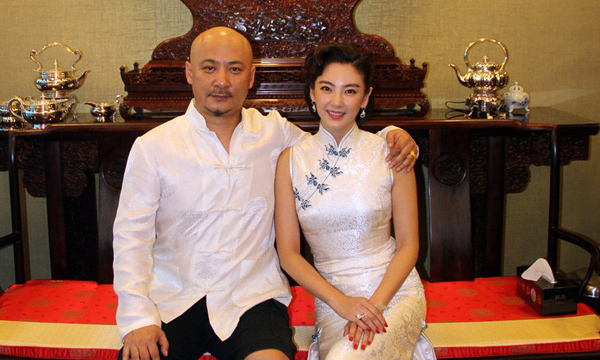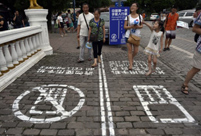 Opps! What a coincidence!
Opps! What a coincidence!
 Breathtaking scenery in Redstone Park in SW China
Breathtaking scenery in Redstone Park in SW China
 Vintage cars show kicks off in London
Vintage cars show kicks off in London
 Gorgeous scenery in NE China
Gorgeous scenery in NE China
 Picturesque Barkol grassland in Xinjiang
Picturesque Barkol grassland in Xinjiang
 Small Wild Goose Pagoda - A World Cultural Heritage Site along the Silk Road
Small Wild Goose Pagoda - A World Cultural Heritage Site along the Silk Road
 Maritime Silk Road Luxuries of the Han Dynasty
Maritime Silk Road Luxuries of the Han Dynasty
 Ciao! Chinese beauties!
Ciao! Chinese beauties!
 An eye feast: BFA freshmen registration
An eye feast: BFA freshmen registration
 Top 10 most lavish weddings
Top 10 most lavish weddings
II. Responsibilities and Structure
Constituting as it does an important part of the Xinjiang Uyghur Autonomous Region, the XPCC assumes the responsibilities entrusted to it by the state of cultivating and guarding the border areas, and operates an administrative system with unified Party, government, military, and enterprise roles. It is a special social organization that handles its own administrative and judicial affairs within the reclamation areas under its administration, in accordance with the laws and regulations of the state and Xinjiang Uyghur Autonomous Region, with economic planning directly supervised by the state. It is subordinated to the dual leadership of the central government and Xinjiang Uyghur Autonomous Region.
In the course of fulfilling its responsibility to cultivate the border areas, the XPCC has focused on modern agricultural development while expanding secondary and tertiary industries, with emphatic efforts toward protecting and improving the ecological environment and promoting social progress and unity among ethnic groups in Xinjiang. In its endeavor to guard the border areas, the XPCC has strengthened national border defense while maintaining national unity and Xinjiang's social stability, and guarding against and cracking down on criminal sabotage activities by terrorist forces. Since the 1980s separatist, religious extremist and terrorist forces and their sabotage activities have become a major threat to national unity and to Xinjiang's social stability. They are hence the focus of the work of the XPCC in guarding the border areas.
In 1990 the central government approved the placing of XPCC economic planning under direct state supervision. The XPCC remains an important component of Xinjiang Uyghur Autonomous Region and is subject to its leadership while under the management of relevant departments of the central government. The adoption of such a dual leadership system signifies an innovative reform in the Corps' administrative subordination, one which facilitates the coordination of leadership over the Corps between the central government and the autonomous region government, and the Corps' fulfillment of its responsibilities, and betters the relations between the Corps and relevant departments of the central authorities, thus promoting the Corps' development. Over the years, the central government has granted policy support and funding to the XPCC in the fields of public services, public security, education, science and technology, culture, health, agriculture, forestry, and water conservancy, so injecting great energy and new vitality into the economic and social development of the XPCC.
The XPCC operates a special administrative system with unified Party, government, military, and enterprise roles. Party organizations have been set up at each level of the Corps to exercise leadership over all its undertakings. The XPCC has administrative and judicial organs to handle its specific administrative and judicial affairs. The Corps is a paramilitary entity with military organs and armed forces units wherein the militias are the mainstay. It is organized in a military structure of corps, divisions, regiments, and companies, whose commanders have corresponding military titles. The XPCC, also known as the China Xinjian Group, is a large state-owned enterprise engaged in agriculture, industry, transport, building, and commerce, and at the same time assumes state assigned economic tasks. The XPCC's leadership combines the functions of the Party, government, military, and enterprise.
The XPCC has fully integrated into Xinjiang society. Its division and regimental farms, subordinate enterprises and public institutions, administered by the Corps in a top-down model of leadership and vertical management, are widely distributed in the prefectures, cities, and counties of Xinjiang Uyghur Autonomous Region. In reclamation areas, which feature important strategic positions, concentrated distribution of regimental farms, considerable economic strength, and great development potential, the XPCC has set up seven county-level divisions/cities directly administered by Xinjiang Uyghur Autonomous Region and five regiments/towns, which are administered by the Corps at different levels. Each division/city or regiment/town has Party leadership and government administration functions integrated into one unit.
 |  |
 Vibrant 21-year-old and her own Cheongsam brand
Vibrant 21-year-old and her own Cheongsam brand Fashion style: Faye Wong vs Cecilia Cheung
Fashion style: Faye Wong vs Cecilia Cheung Jungle law: leopard preys on impala
Jungle law: leopard preys on impala Female bus driver drives Land Rover for commuting
Female bus driver drives Land Rover for commuting Century-old public bath closes door in Beijing
Century-old public bath closes door in Beijing Leading director Wang Quan'an detained for 'buying sex'
Leading director Wang Quan'an detained for 'buying sex' Mixed reaction to smartphone sidewalk
Mixed reaction to smartphone sidewalk Amazing aerial photos of China's Xisha Islands
Amazing aerial photos of China's Xisha Islands Top 10 world's highest-paid models 2014
Top 10 world's highest-paid models 2014 Lingerie show at 2014 Miss China
Lingerie show at 2014 Miss China Songstress Li Xianglan dies at 94
Songstress Li Xianglan dies at 94 Police recruiting posters
Police recruiting posters Anshun Daxi- Living fossil of Chinese drama
Anshun Daxi- Living fossil of Chinese drama Urban farmers in China
Urban farmers in China 'Firepower-2014 Weibei'military exercise
'Firepower-2014 Weibei'military exerciseDay|Week|Month